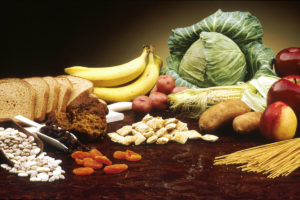 An interesting small study of one family shows how quickly one can eliminate many pesticides from the body by switching to an all organic diet. One Swedish family of 2 adults (aged 40 and 39) and 3 children (aged 12, 10, and 3) who had been eating mainly conventional food were studied.
An interesting small study of one family shows how quickly one can eliminate many pesticides from the body by switching to an all organic diet. One Swedish family of 2 adults (aged 40 and 39) and 3 children (aged 12, 10, and 3) who had been eating mainly conventional food were studied.
For the study they only ate conventionally grown food for one week and then they switched to an all organic diet for 2 weeks (fruit, vegetables, meat, fish, etc,). Urine was collected every morning from all family members, and a food diary was kept. Common pesticides and their metabolites were analyzed: atrazine, chlorpyrifos, 2.4-D, pyrethroids, MCPA, chlormequat chloride (CCC) etc.
However, the most commonly used pesticide in the world - glyphosate (Roundup) was not looked at. The results showed that pesticide levels were reduced very quickly once they started eating an all organic diet.
The report also mentioned that currently pesticide standards are only for one pesticide at a time, but people have exposure to many pesticides in daily life (foods, their environment, cleaning supplies, etc) - thus people are exposed to a chemical cocktail that we know very little about about - whether looking at short-term or long-term effects. Article (and video link) from The Sydney Morning Herald:
Family eats organic for just two weeks, removes nearly all pesticides from body
A Swedish family has shown just how quickly an organic diet change can rid the body of pesticides. In a fortnight-long experiment, the family of five - parents Anette and Mats, and kids Vendela, Evelina and Charlie - swapped their conventional diet for an organic one and found that just two weeks of eating an organic diet managed to rid their bodies of most traces of pesticides.
The video explaining the experiment, which was conducted by Swedish supermarket Coop and the Swedish Environmental Research Institute, has been viewed more than a million times on YouTube.
The researchers measured the levels of plant growth regulators chlormequat chloride, mepiquat, 3-PBA and cleaning agent TCP in urine samples taken from each family member before and after their two weeks of organic eating. Before the experiment, middle child Evelina's urine was showing nearly five nanograms of chlormequat chloride per millilitre. After eating only organic foods for two weeks, the chemical was unable to be detected in her sample. The most profound effects were found in toddler Charlie's samples. Despite his urine before the experiment showing high levels of all four of the chemicals, after the experiment none of the substances were detected.
The original 2015 report Coop Sverige AB, Report number U 5080, from the Swedish Environmental Research Institute: Human exposure to pesticides from food: A Pilot Study
The IVL Swedish Environmental Research Institute was commissioned by Coop Sverige AB to conduct a small survey on whether a switch from conventional to organic foods can provide a measurable effect on the level of plant protection products in the body. The study has been conducted using a family with three children who usually do not eat organic food. The family first had to eat conventional, non-organically grown food, followed by only organic food. Urine samples were taken from all family members throughout the period and their pesticide residue content was analysed. The results of the survey clearly show that some pesticides are absorbed into the body through diet.
Compared with the period when the family consumed conventionally grown food, the concentrations of pesticide residues decreased on average by a factor of 6.7 when the family ate organic food. The children in particular had lower concentrations during the period of organic food consumption. Levels of most, but not all tested pesticides fell in the adults.
The substance that was found in the highest concentration was chlormequat chloride (CCC) in a sample from the youngest child. Based on the information from the food diary, this could be explained through the child having eaten more grain products – such as porridge, bread, and pasta – compared with the adult family members. Chlormequat chloride is used as a straw-shortening agent in the cultivation of grain. The concentrations measured in the urine show that although pesticides are present in the body, the levels are low and, when converted, are estimated to be below the ADI value (acceptable daily intake) by a good margin. The ADI value is the maximum quantity of a substance that a person can consume daily throughout his or her lifetime without this posing any risk to their health.
It is therefore unlikely that a single substance would pose any risk to humans. That said, the system currently used for risk assessing chemicals is suitable only for one substance at a time. There is, therefore, no approved method for making an overall assessment of the effect of multiple chemicals simultaneously (i.e. combination effects, popularly known as the “cocktail effect”).
This study clearly illustrates that the food we eat is one route to exposure to chemicals. This is particularly true for children, who eat and breathe more in relation to their body weight. Consequently, the same exposure results in higher concentrations of chemicals in their bodies than in adults (Swedish Chemicals Agency 2014).
1:34 minute VIDEO: THE ORGANIC EFFECT https://www.youtube.com/watch?v=usZrD0nBLlY
